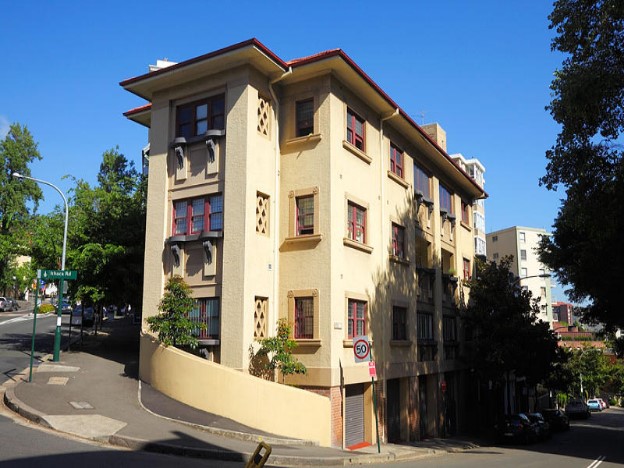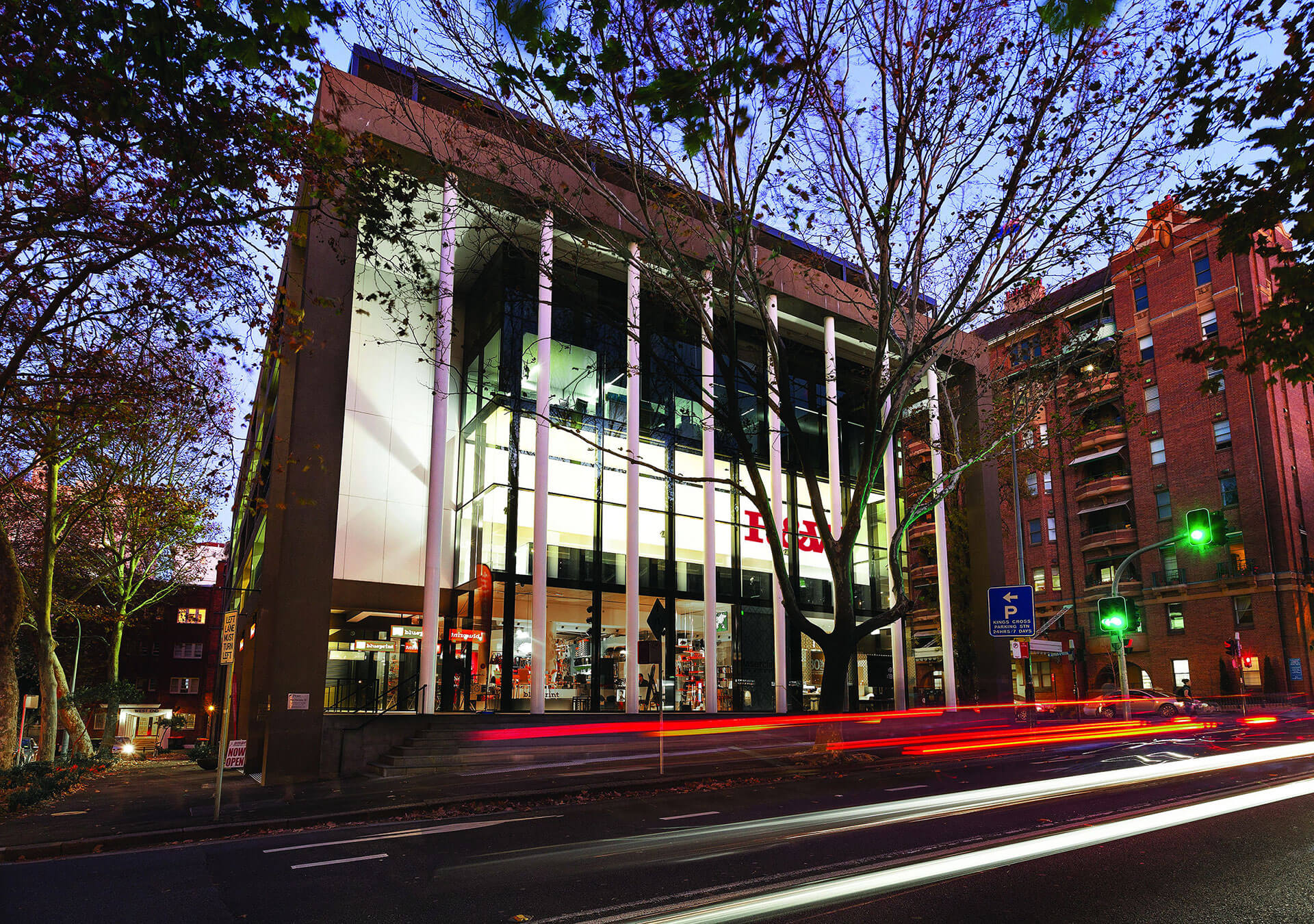BLAIR APARTMENTS

“Blair” apartments, 74 Elizabeth Bay Road, Elizabeth Bay, is a three-storey block of apartments whose private entrance is within an alcove behind wrought iron gates.
It was built by 1928 according to Sands’ NSW Directories 1925-1929 with Sir Frederick Waley, businessman, the only initial resident, confirmed by Sydney Council’s rates records. It may well have been built by the distinguished architectural firm, Spain & Cosh (1904-38) according to the NSW Heritage Office. The two architects met at Sydney Technical College.
They were a respected and conservative firm but also used new technologies for rapid construction methods such as the Blashki building (1909) using brick and concrete, and the ADC Building (1923) employing reinforced concrete and steel. They also designed apartments, hotels, 29 fire stations, houses, factories, warehouses and the Marcus Clark TAFE building, according to the Australian Encyclopedia of Australian Architecture, published by Cambridge University Press.
Alfred Spain (1868-1954), known as “the colonel”, was a Lieutenant-Colonel in World War I. He was described as ‘dapper, precise and optimistic’ with a love of animals, birds and poetry. He was initially educated at the former Queen’s School, Potts Point (now closed).
As Spain, Cosh & Minnett (1910-12) he was responsible for the New Zealand Insurance Co.’s offices in Pitt Street and the controversial 12-storey Culwulla Chambers, King and Castlereagh Streets. (built 1910-12), described as a “skyscraper” in Local Government Journal of Australasia. This building created a public outcry. It was Australia’s tallest building at 178 ft (54 m) and led to the 1912 Height of Buildings Act limiting buildings to 150 ft (46 m). Their most lucrative clients were brewers, Tooth & Co. Ltd., and the Board of Fire Commissioners. They completed many other important projects such as Leichhardt Town Hall and Singleton District Hospital.
Thomas Frame Cosh (1869-1947) was born in the New Hebrides where his father was a missionary. He was initially educated at the Sydney Grammar School. When Spain withdrew from the partnership in 1938 Cosh continued in association with his nephew, Mr. J. A. Cosh.
The design for “Blair” is mainly in the “Olde Englishe” arts and crafts style. This was a popular style of the period along with Art Deco, Mediterranean and neo-classical idioms. Number 74 also incorporates some of these latter elements.
The Arts and Crafts movement was an international movement in the decorative and fine arts beginning in Britain which later flourished in Europe and North America between about 1880 and 1920, emerging in Japan (the Mingei movement) in the 1920s. It stood for traditional craftsmanship using simple forms and often used medieval, romantic, or folk styles of decoration. It advocated economic and social reform and was essentially anti-industrial. It had a strong influence on the arts in Europe until it was apparently displaced by Modernism in the 1930s and its influence continued among craft makers, designers, and town planners long afterwards.
The term was first used by T. J. Cobden-Sanderson at a meeting of the Arts and Crafts Exhibition Society in 1887.
Interiors of number 74 include large, thick, “rafter” roof beams, stained glass heraldic coats of arms, coffered ceilings and lead light windows; all arts and crafts mediaeval features. Large neo-classical fireplaces and bathroom tiles and dado railings complement rich, Blackwood polished plank floors.
The facade is contemporaneous with the period. It is rough cast to give a nobbled, hand-made, medieval, rustic effect, part of its arts and crafts ethos. Large Moorish, Mediterranean fret work panels on the exterior are unusual because Sydney is essentially a tropical climate and receives generous rain. The patterned fretwork, or open tracery, is ancient gothic-inspired. It is designed to shield inhabitants from harsh, direct sun and casts playful silhouettes on interior walls, while allowing habour zephyrs to provide soothing cross-flow ventilation. The panels are on the northeastern facade, facing the sun.
In July 1950 The Sydney Morning Herald reported the whole building was sold for £20,000.
It is now 90 years old and still retains its majesty.
By Andrew Woodhouse, Heritage Solutions





